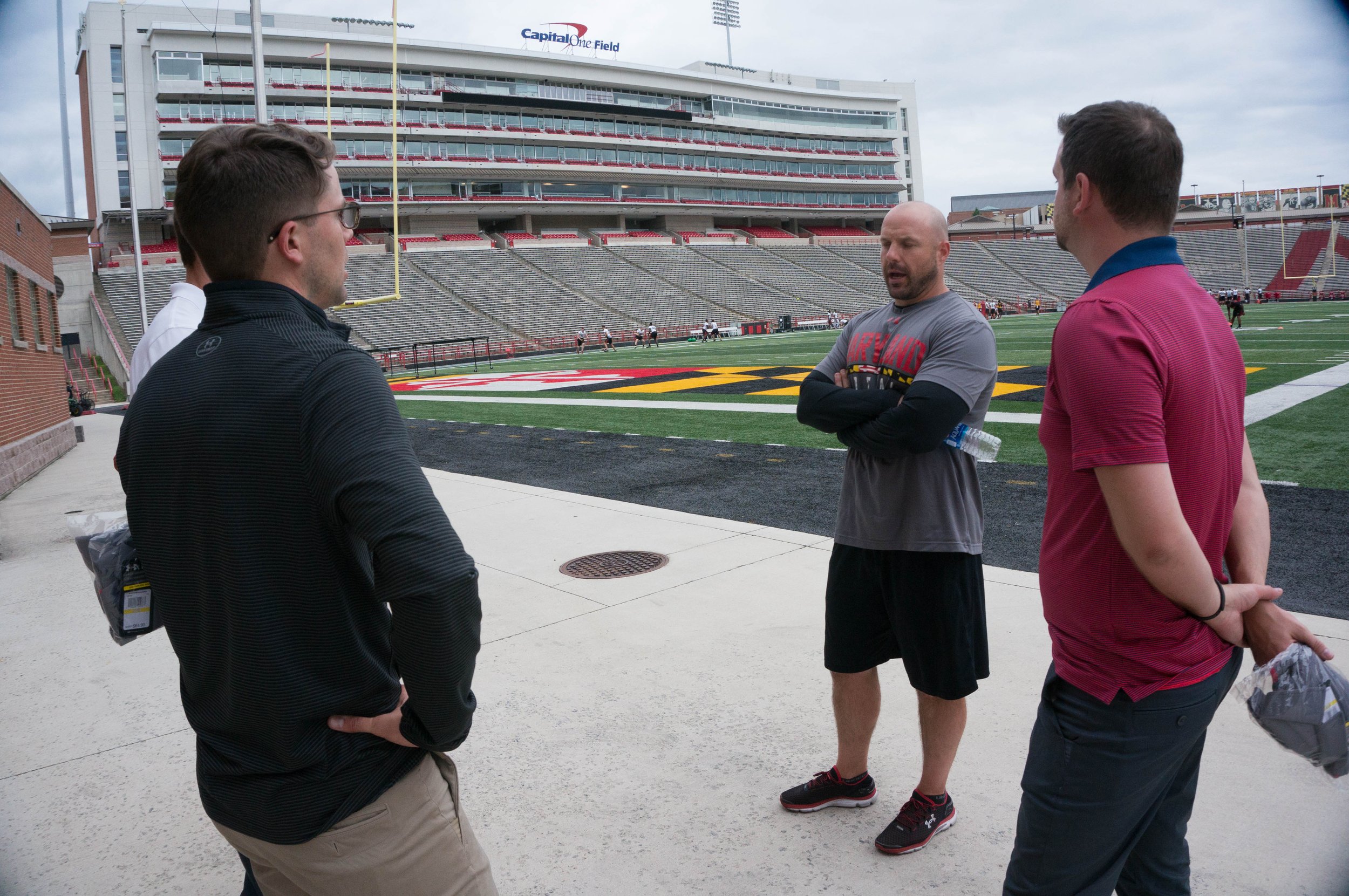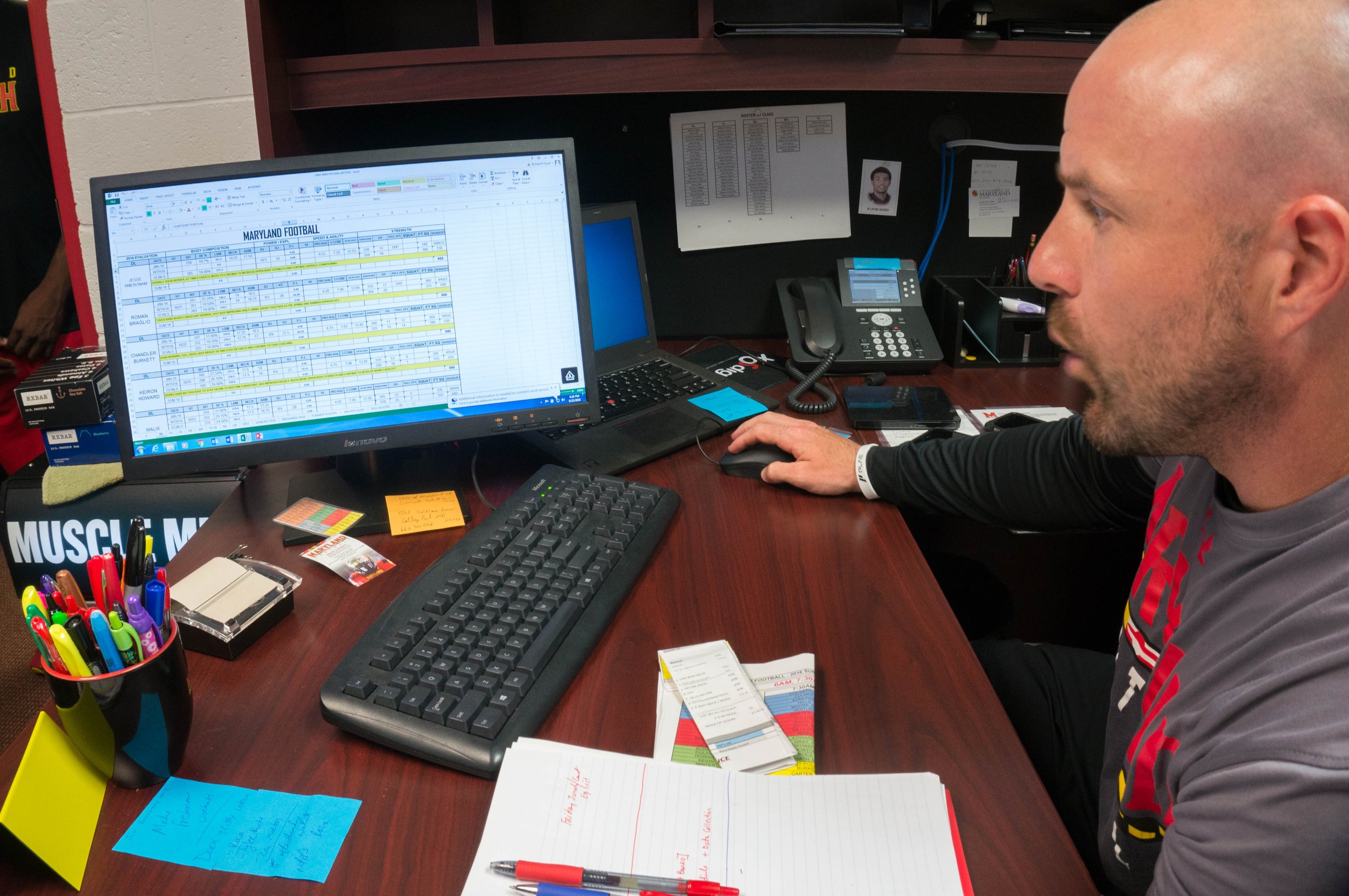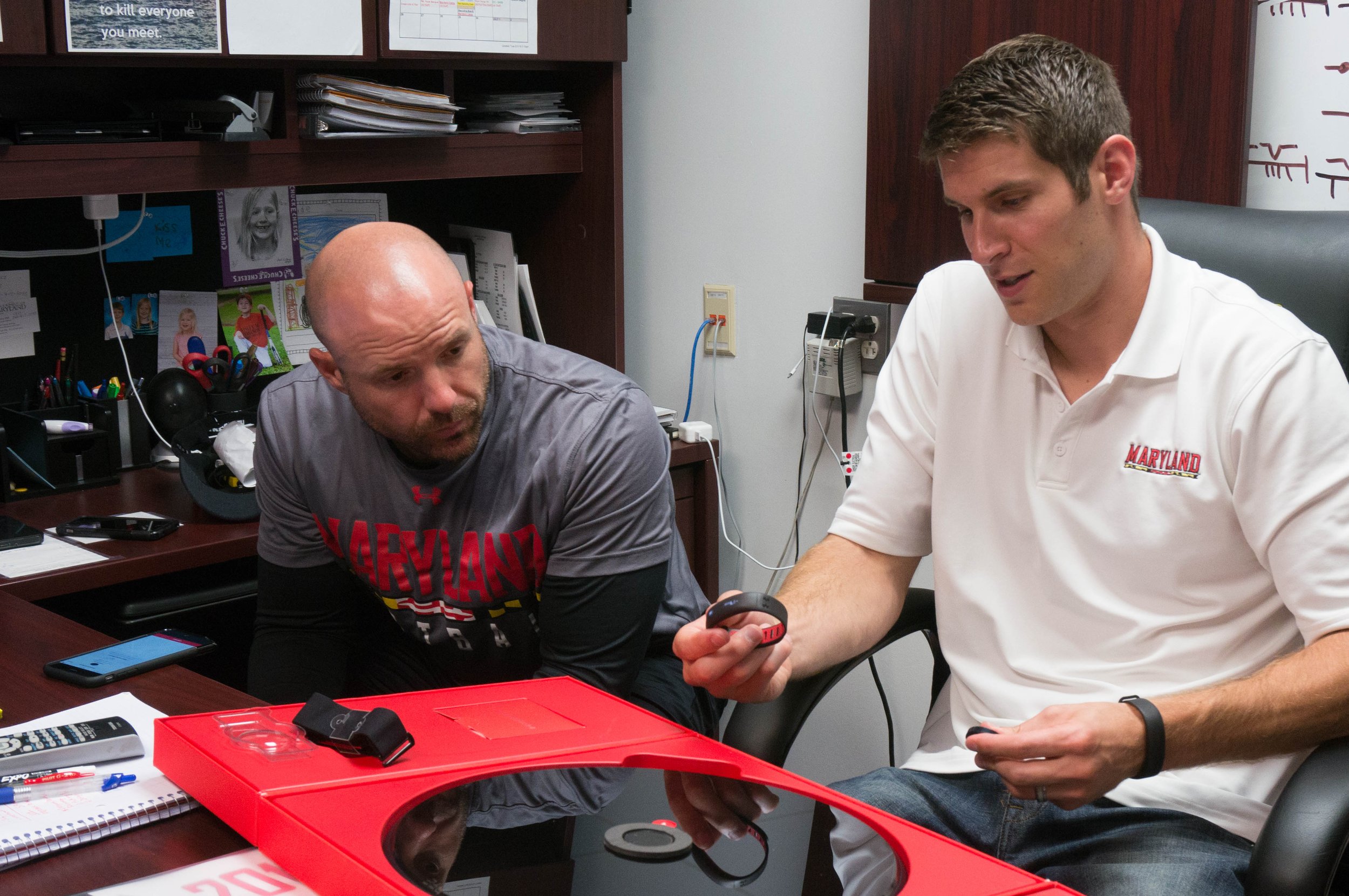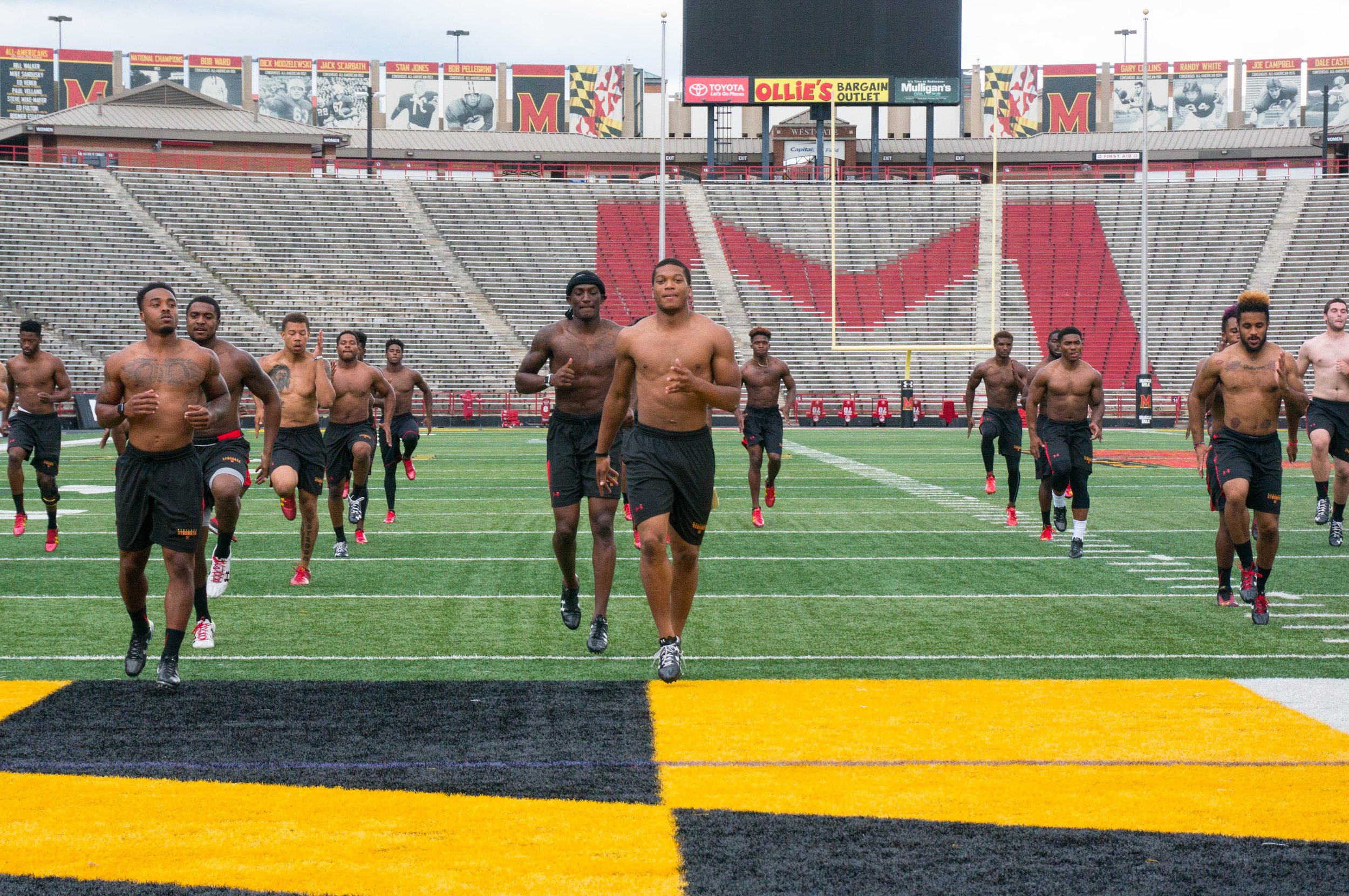Project Elevate:
How we worked with coaching staff to design a sleep dashboard for athletic teams.
PRODUCT
Under Armour Record for Teams
2016
PLATFORM
Web app / iPad
ROLE
- Developed research and interview plan
- User validation testing
- Lead designer
OVERVIEW
Project Elevate is a pilot project for Under Armour’s foray into utilizing personal health tracking devices to help athletic teams gain a competitive edge. Stemming from John Hopkin’s research around sleep health and its impact on recovery and athletic performance, Under Armour was hoping to leverage the sleep tracking capabilities of their UA Band and Record app to serve athletic teams.
Under Armour partnered with the Maryland Terps Football team to launch this pilot program. We collaborated with the coaching staff to design a dashboard that they could use to monitor the sleep metrics of their athletes. This pilot was conducted with the University of Maryland’s football team’s for the 2016 year of training camps through the game season.
RESEARCH
To better understand what we were designing for, we flew down to Baltimore and visited the Maryland Terps during their training camp season. We shadowed the coaching staff and athletes for a day, observing their workflow and interviewing stakeholders to uncover the needs and wants of the team.
The coaches of the Maryland Terps pride themselves on training smart, not just hard. As such, data tracking and monitoring are key components of their daily workflow. They rely on data not only to evaluate the effectiveness of their programs and methodology, but to also protect the athletes and keep them safe. Some examples of data tracked on a daily basis includes hydration levels, urine color, resting heart rates, nutrition intake, body measurements and performance data. The team enters the data into excel spreadsheets daily, which are programmatically color coded to flag at-risk athletes for timely interventions.
Coaches rely heavily on these color coded excel spreadsheets for different metrics.
Medically at-risk athletes are also recorded and color coordinated on a separated card that coaches carry with them.
Athletes record their pee color on a white board for public accountability to their teammates and coaches.
DESIGN SOLUTIONS
Our biggest challenge of this project was making sure this product added value, not work, to the team. With so many data sets to manage, an additional tool specifically for sleep monitoring had to be minimally intrusive and integrate seamlessly into their existing workflow. Instead of creating a platform that holistically merged all their data into a single sheet, we chose to create an isolated platform just for sleep data that mimics the format of their other data sheets.
Product Goals:
Increase compliance through accountability between staff and athletes.
Provide transparency for timely interventions.
Empower coaches with data to drive decisions – Knowing the readiness of athletes will enable coaches to put their best players on the field on game day and adjust training loads to minimize injuries.
Integrates well into current workflow without feeling like an additional task.
The platform: Web App
While the athlete’s view of sleep tracking was on a mobile app, the coaches view was built as a web application to allow for interchangeable use on desktop and iPads. This allows the coaches flexibility in referencing data in different coaching scenarios.
Maintaining familiarity of format with other data sheets.
The dashboard was designed to be viewed in portrait mode, rather than the traditional landscape view to minimize the need to rotate the iPad when switching between different data sheets that the team was already using. Moreover, since data was focused on week view and overall status rather than depth of detail, the focus of the dashboard was to surface the breadth of athletes, rather than the depth of each athlete’s data.
Providing a high level summary.
Allows the coaches to quickly see the overall sleep health of the team to dictate the overall pace of training for the day.
Using intuitive traffic light color signaling.
During our on-site interviews and shadowing, we noticed a color coding system and observed how spreadsheets were read and analyzed. By adopting their color coding system and universal signal colors of red/yellow/green, coaches did not have to learn a new system and could intuitively glean meaning from the dashboard.
Surface athletes that need attention for timely intervention.
Current spreadsheets that coaches use are ordered statically, requiring coaches to go through line-by-line to find the athlete and identify individuals who need attention.
The product lifts the burden from the coach and automatically sorts them, highlighting athletes that require attention for:
Not being compliant with wearing sleep tracking devices to provide data.
Having repetitive poor sleep hygiene.
Being at risk of injury due to poor sleep for the day.
A flexible platform that can be used by different coaching staff for different groups.
Filter between groups:
Since coaching staff is managed in different groups, filtering allows the respectively coaches to filter down to view only the athletes they manage, or those they want to monitor closely.
Glanceable views for different needs. With incoming freshman and selection camps, coaches need an easy way to monitor new athletes that are unfamiliar to them. The grid view provides easy aid to the coaches and helps them attach faces to names for easy identification and monitoring of at-risk individuals. The grid feel also allows a visual way for the coach to see how well rested their team is at a glance.
The list view on the other hand mimics the spreadsheets the coaches are familiar with, providing them with access to more data to dive deeper in.
PILOT OUTCOMES
Pilot was a success. We demonstrated a working product that delivered value in an authentic way.
Analysis from the UMD team revealed that there was indeed a correlation between good sleep data and game victories. When the team had good sleep data, they won. When sleep data was poor, they lost. Seeing this correlation gave the coaching staff more resources to invest in improving athletes’ sleep and provided more compelling evidence for athletes to have better sleep practices.
The transparency and accountability between athlete and coaches improved compliance for regular bedtimes and allowed for timely interventions.
Head coach of the University of Maryland football team expanded the pilot from 30 athletes to all 105 athletes on the football team.
Pilot project was expanded to the Welsh Rugby Union team and New Orleans Saints.
Unfortunately, efforts were shut down after Under Armour stopped production of UA Bands in 2017.
















